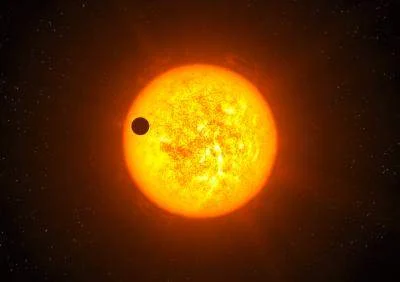Astronomers have discovered a gas-giant exoplanet locked into a circular orbit around its parent star.
The planet – dubbed Corot-9b – is located approximately 1,500 light-years from Earth in a constellation known as Serpens.

Corot-9b passes in front of its host star every 95 days. This “transit” lasts for about 8 hours in duration and provides astronomers with additional information about the planet.
“This is a normal, temperate exoplanet just like dozens we already know, but this is the first whose (hydrogen and helium) properties we can study in depth,” explained Claire Moutou, who is part of the international team of 60 astronomers that made the discovery.
“It is bound to become a Rosetta stone in exoplanet research.”
More than 400 exoplanets have been discovered so far, 70 of them through the transit method. Corot-9b is unique in that its distance from its host star is about ten times greater than that of any planet previously discovered by this method.
The planet also boasts a relatively temperate climate, with its gaseous surface though to hover between 160 degrees and minus twenty degrees Celsius, with minimal variations between day and night.
The CoRoT satellite, operated by the French space agency CNES, identified the planet after only 145 days of observations during the summer of 2008.
Additional observations with the ESO exoplanet hunter in Chile allowed astronomers to measure its mass, confirming that Corot-9b is indeed an exoplanet, with 80% the mass of Jupiter.






